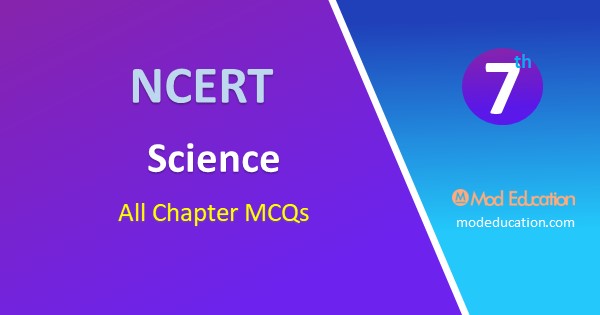MCQ Questions for Class 7 Science Chapter 11 : NCERT solutions for Class 7 Science MCQs Chapter 11 “Transportation in Animals and Plants” with Answers PDF Free Download prepared here according to the latest CBSE syllabus and NCERT curriculum. Class 7 Science MCQs Multiple Choice Questions for all Chapter.

MCQ Questions for Class 7 Science Chapter 11 Transportation in Animals and Plants with answer pdf
Q1. The pumping organ of our circulatory system is
(a) heart
(b) artery
(c) vein
(d) all of these
Answer: (a) heart
Q2. Function of heart is
(a) Pumping of blood
(b) Removal of nitrogenous wastes
(c) Purification of blood
(d) All of these
Answer: (a) Pumping of blood
Q3. Which of the following is the main circulatory fluid in our body ?
(a) Plasma
(b) Lymph
(c) Blood
(d) None of these
Answer: (c) Blood
Q4. Water absorption through roots can be increased by keeping the plants:
(a) in the shade
(b) in dim light
(c) under the fan
(d) covered with a polythene bag
Answer: (c) under the fan
Q5. What is the state of the blood?
(a) Solid
(b) Fluid
(c) Gas
(d) None of these
Answer: (b) Fluid
Q6. Which blood group is called as universal donor?
(a) O
(b) A
(c) B
(d) AB
Answer: (a) O
Q7. Which one of the following contains haemoglobin?
(a) RBC
(b) WBC
(c) Platelets
(d) None of these
Answer: (a) RBC
Q8. The process by which a plant loses water through the stomata is called:
(a) excretion
(b) transpiration
(c) respiration
(d) sweating
Answer: (b) transpiration
Q9. They are pipe-like, consisting of a group of specialised cells. They transport substances and form a two-way traffic in plants. Which of the following terms qualify for the features mentioned above?
(a) Xylem tissue
(b) Vascular tissue
(c) Root hairs
(d) Phloem tissue
Answer: (b) Vascular tissue
Q10. In plants which of the following is used for absorption of water?
(a) Xylem
(b) phloem
(c) stomata
(d) root hair
Answer: (d) root hair
Q11. What is the function of WBCs?
(a) Transport of oxygen
(b) Fight against germs
(c) Involved in blood clotting
(d) All of these
Answer: (b) Fight against germs
Q12. Urea is a waste produced in the process of the breaking down of:
(a) proteins
(b) carbohydrates
(c) fats
(d) sugar
Answer: (a) proteins
Q13. The fluid part of the blood is known as
(a) membrane
(b) plasma
(c) RBC
(d) WBC
Answer: (b) plasma
Q14. An adult human being normally passes about _ of urine in 24 hours.
(a) 0.5 to 0.85 L
(b) 2 to 5 L
(c) 2 to 2.5 L
(d) 1 to 1.8 L
Answer: (d) 1 to 1.8 L
Q15. Blood platelets help in
(a) formation of urine
(b) excretion of urine
(c) sweating
(d) blood clotting
Answer: (d) blood clotting
Q16. The thinnest blood vessels in the human body are:
(a) arteries
(b) capilharies
(c) veins
(d) any of these
Answer: (b) capilharies
Q17. The red pigment present in the RBC of the blood is
(a) haemoglobin
(b) WBC
(c) pulse
(d) none of these
Answer: (a) haemoglobin
Q18. Select the type of cells, present in blood, whose main function is to fight against diseases by destroying harmful bacteria and other foreign material.
(a) RBC
(b) WBC
(c) Platelets
(d) None of these
Answer: (b) WBC
Q19. The muscular tube through which stored urine is passed out of the body is called:
(a) kidney
(b) ureter
(c) urethra
(d) urinary bladder
Answer: (c) urethra
Q20. Blood platelets are responsible for:
(a) haemoglobin
(b) red blood cells
(c) white blood cells
(d) blood clotting
Answer: (d) blood clotting
